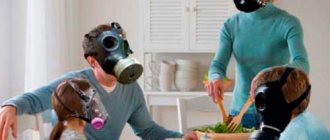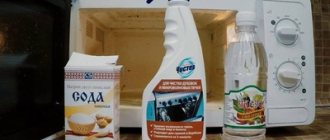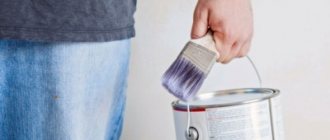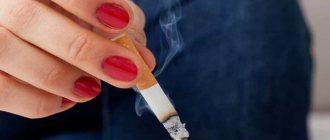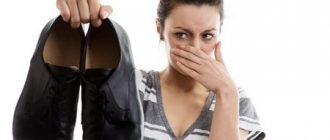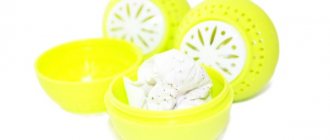There is no such repair that could be done without the use of paints and varnishes. With the start of renovation work, numerous odors enter the house, among which fumes from drying paint are clearly not the most pleasant. Most of us would prefer not to inhale dangerous fumes, but rather use safer materials whenever possible. If you set a goal, you can find a suitable option, for example, to have floor paint that is odorless and quick-drying.
Modern materials for interior work
Is there odorless interior paint? To be precise, there are no odorless paints and varnishes in nature; there are low-smelling ones or with a neutral odor that does not cause irritation to the mucous membranes, which means that after a short period of time it is simply no longer felt. There are plenty of such materials; you just need to choose the right specific paint for housework.
Commercially available paints for household purposes are practically odorless:
- Acrylic paints and varnishes. Some of the most popular paints and varnishes among the people are made on a water basis, and therefore have a reputation as the most harmless to the human body;
- Water-dispersible materials. The structure resembles acrylic compositions, they are also made on a water basis, but are suitable only for certain types of work, for example, for painting walls;
- Selected varieties of polyurethane and oil paints. The most complex group of materials in composition, but the range of use of polyurethane and modified oil materials is very wide.
For your information!
The water-soluble base quickly evaporates from the applied paint layer. The drying process of such paints at temperatures up to 7°C occurs twice as fast as for materials based on organic solvents. The exception is nitro paints, in which the alcohol-acetone base can dry almost on the brush, but such material always has a very pungent and strong odor. In addition, inhalation of nitro paint solvent fumes can lead to toxic poisoning.
How to determine whether there will be a smell or not
All paints have a smell, even water-soluble acrylic and water-dispersed ones. Usually, the issue of whether the paint has an odor is not checked when purchasing a material; if the seller says that acrylic paint is odorless, then it is so. Then, when applying the coating, it turns out that the smell is still present. Not as nasty, but there is a smell. It would be surprising if the quick-drying material had no odor.
When evaporating, the molecules of an aqueous or organic paint base always capture some of the binder, so no matter whether the paint is water-based or hydrocarbon-based, it will always smell. Professional painters know that after painting, even if the paint does not get on the skin of the hands, exposed parts of the body - the face and hands - should be washed thoroughly with soap, and thereby remove molecules and microparticles of paint that have got on the skin along with solvent vapors.
Another thing is that each person has his own threshold of sensitivity to odor, with a corresponding adaptation to the chemical irritant, after which even the most pungent and volatile substances are practically not perceived.
Advice! You can determine how unpleasant the smell of the purchased paint material may be. It is necessary to apply a small amount of the mixture without solvent and thinner onto glazed ceramic tiles heated to 50-60°C.
The rapid evaporation of an aqueous or organic base will immediately reveal what the real smell of the paint is. In practice, the most popular acrylic paints smell quite unpleasant when tested.
Additional recommendations
Recommendations for novice painters on applying odorless enamels for interior work:
- pour paint in portions into a flat tray equipped with a plane for removing excess from a brush or roller;
- The material should be applied to previously cleaned and prepared surfaces;
- during the painting and drying process, ensure ventilation of the room, despite the use of odorless paint;
- when performing painting work, use protective gloves or goggles with a respirator when using a spray gun;
- When painting, have a supply of solvent ready;
- apply enamel in 2-3 layers with intermediate drying (in accordance with the manufacturer’s recommendations);
- Freezing of paint during storage is not allowed; when ice crystals form, an irreversible decrease in the characteristics of the material occurs;
- Before painting, the glossy base must be sanded and wiped with a damp cloth to remove traces of dust;
- walls coated with lime should be brushed and soaked with soil.
Which quick-drying, odorless paints to choose for repairs?
Few paints can claim to be a universal material suitable for any repair work; most varieties and groups of paints are produced for specific purposes, for example, for covering floors or painting walls. Therefore, when choosing a brand of paint, you should pay attention first of all to the purposes for which it is intended:
- Resistance of paintwork to moisture, heat and sunlight;
- The presence of gloss on the dried surface of the paint;
- Ability to withstand abrasion and contact pressure.
It is not always possible to choose the best floor covering so that the material dries quickly, is highly resistant to abrasion and at the same time has no odor. For example, the best floor paint is made from a two-component polyurethane mixture. But this material has a specific smell, although it dries quite quickly, literally in a couple of hours.
Acrylic paints and varnishes
Quick-drying compositions based on acrylic resins can be used for most interior work, painting any wooden, plastic, and metal surfaces. An exception may be gypsum and wooden surfaces made of beech and poplar, which absorb moisture very quickly. After painting, the surface of the wood quickly swells, and after drying, the texture of the applied paint layer becomes uneven, dotted with small dots.
If the repair requires odorless paint for heating radiators, then acrylic enamel is best suited. Among the wide range of domestic and foreign painting materials, the most popular are the fast-drying acrylic enamels of the Finnish production Tikkurila Miranol and the German company JOBI called Termoaquaemal.
From domestic products you can use D-220 and Livna-134. The quick-drying, odorless paint for radiators under the VD AK1179 index from VGT is distinguished by high quality coating.
After applying acrylic enamel to the cleaned base of a radiator or battery, the layer dries in 4-5 hours. Some quick-drying acrylic compounds, for example, Parade, can be applied to the surface of a working warm battery, provided that the metal temperature does not exceed 40-45 ° C. But in this case, a slight chemical smell may appear.
When choosing enamel, you should pay attention to the alphanumeric designation of the maximum heating temperature of the radiator. Most materials can withstand heating up to 120°C, but there are more moderate indicators, up to 60 and 70°C.
Quick-drying acrylic compositions for painting batteries after drying provide good quality coating:
- A high degree of whiteness, which is important for heating radiators, to which house and street dust sticks most strongly, which is why the white body turns into gray over time;
- The glossy surface makes cleaning easy, and the acrylic enamel coating feels very similar to plastic.
Important! The disadvantages of acrylate enamel include deterioration in heat transfer due to the increased polymer layer on the surface of the radiator.
In addition to purely acrylic compositions, latex compositions, which are also water-based, are used for renovations in an apartment or private house. The latex composition practically dries odorless even when heated. Unlike most acrylic and acrylate polyurethane compositions, the latex coating practically does not lose adhesion, does not swell or peel off on the heated and cold surface of pipes or radiators.
Odorless latex floor paint is used for painting fiberboard and OSB flooring. This odorless paint can be considered the fastest drying of all materials; complete drying time at a temperature of 18°C does not exceed one hour.
Polyurethane and oil paints
Polyurethane paint compositions have excellent abrasion resistance and provide the highest adhesion. Polyurethane parquet varnishes are much more durable than acrylic varnishes and provide an odorless coating. For expensive parquet, mosaic or oak floors, epoxy or polyurethane varnishes and paints are used.
One-component water-based polyurethane compounds dry on a prepared wooden floor for up to 5 hours. For comparison: alkyd material will dry in 8-10 hours, acrylic - 2-4 hours.
There is a certain difference in how the degree of completion of the coating is determined. Most often, the manufacturer calls the floor composition quick-drying if the interval between application of layers does not exceed 4-5 hours. For example, an excellent varnish - Belinka Parquetin floor paint, absolutely odorless, can be called quick-drying, since it dries to tack at room temperature in 3 hours. But complete polymerization of the layer, during which you can stand on the painted floor without the risk of damaging the coating, ends only after 12 hours, and with a three-layer treatment - after 6-7 days.
However, polyurethane paints can be recommended primarily for painting floors, as they are the safest, most durable and quick-drying.
Oil paints are prepared from drying oils of plant origin. They take the longest to dry, up to 40 hours. When diluted with drying oil or a special thinner based on white spirit and turpentine, a specific pleasant odor arises, which disappears almost completely within 4-5 hours. Oil compositions modified with polyurethane dry in 5-6 hours and are practically odorless.
Latex
Latex paint is one of the types of water-dispersed dyes. Here latex acts as a dispersion, and such paints have their own set of advantages:
- They do not have an unpleasant odor.
- Are not toxic.
- Actively used for indoor work.
Another important quality is that odorless latex enamel has excellent wear resistance. That is why it is often used for painting ceilings and any walls (brick, plastered).
Important! The best solution would be to use this product for painting rooms where there is a constant high level of humidity (bathrooms, kitchens). These paints create a washable surface.
In addition, this paint does not dry out or swell. It can be characterized as quick-drying - this composition needs about 20 minutes to dry, and about an hour to completely dry the painted surface. The complete absence of any odor makes this type of paint the most preferable.



